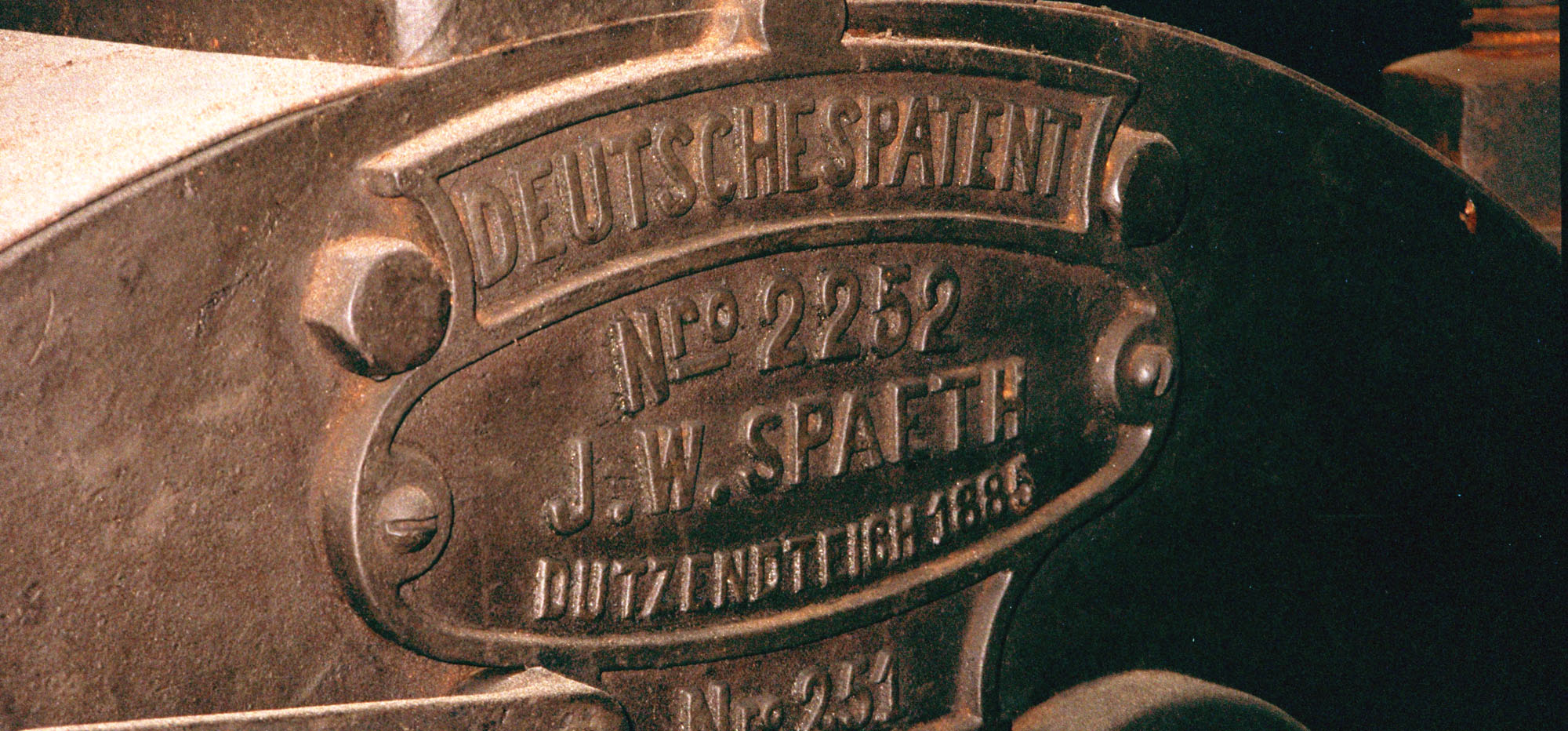German craftsmanship
How the large hop press came to the museum
By Christoph Pinzl
It must have been around the end of 1998. In the book “The other Tübingen”, published by Marburg folklore professor Martin Scharfe, I discovered photos of an “electrically operated hop press”, as it says. Around 1885, the Tübingen hop merchant Ferdinand Hoch had it installed in his hop store. Built and delivered in 1889 by the Nuremberg engineering company Spaeth. At that time, we knew next to nothing about hop presses. Neither did we know anything about hop merchants in Tübingen. Nevertheless, there was an impressive machine on display. It took me a while to realize that the photos were not historical, but had been taken before the book was written. The book was from 1978 – a sharp combination: Could it therefore even be that the Hoch family still lived in Tübingen? Perhaps even the press was still there as shown in the book?
It could. It was there. The telephone directory – a first choice information medium at the time – revealed the Hochs’ Tübingen address. By now represented by Ingrid Hoch-Carstens, the great-granddaughter of the company founder. A first carefully worded exchange of letters: “Dear, we are the Hop Museum here, the German one, we are also interested in Swabia, we have found some photos, is there perhaps anything left, could we perhaps even take a look at them, would it even be possible – something like that.
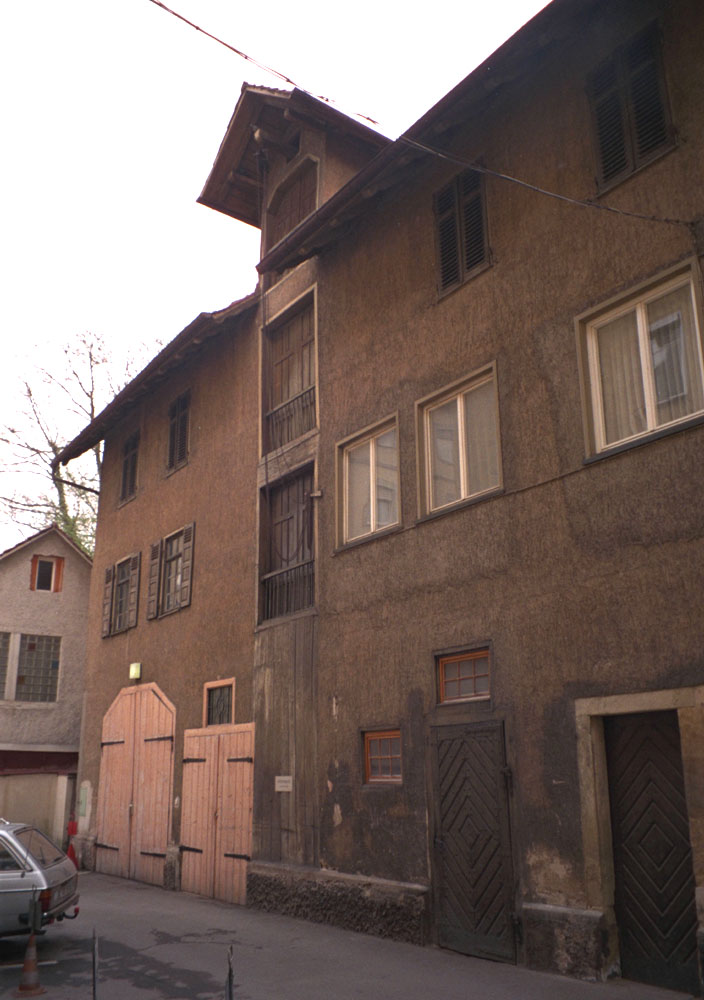
The magazine of the Hoch hop merchants in 1998, which had lain dormant for almost 40 years. Then we came along.
Well, every now and then such clous succeed. Highlights in the life of a museum director. One of them tracks down a lost Van Gogh, the other discovers a hop merchant’s magazine that is over 100 years old. Including company files as sales books, installation plans, correspondence.
And we were knocking down open doors. The reason alone why the whole thing was still in place was remarkable. Hoch had once acquired his house in Tübingen – in the “hop gold rush year” of 1860 – and built the hop warehouse behind it. At that time, it was still outside the city gates, virtually on a greenfield site, as was customary for hop merchants. With their fire-hazardous hop kilns, they were not welcome in the confines of the historic old towns. Corrosive vapors from their hop-sulphur carts also ruined the precious facades of the town houses. The Hoch company was active until the early 1960s. Then the lights in the warehouse were switched off and nothing more happened. It had become difficult to demolish or even convert the buildings. The suburb had become the city center. The district administration office, university and city museum were now the Hochs’ new neighbors. Clearing out, renovating, rebuilding, right in the middle of the city? Very costly. So everything simply remained unchanged.
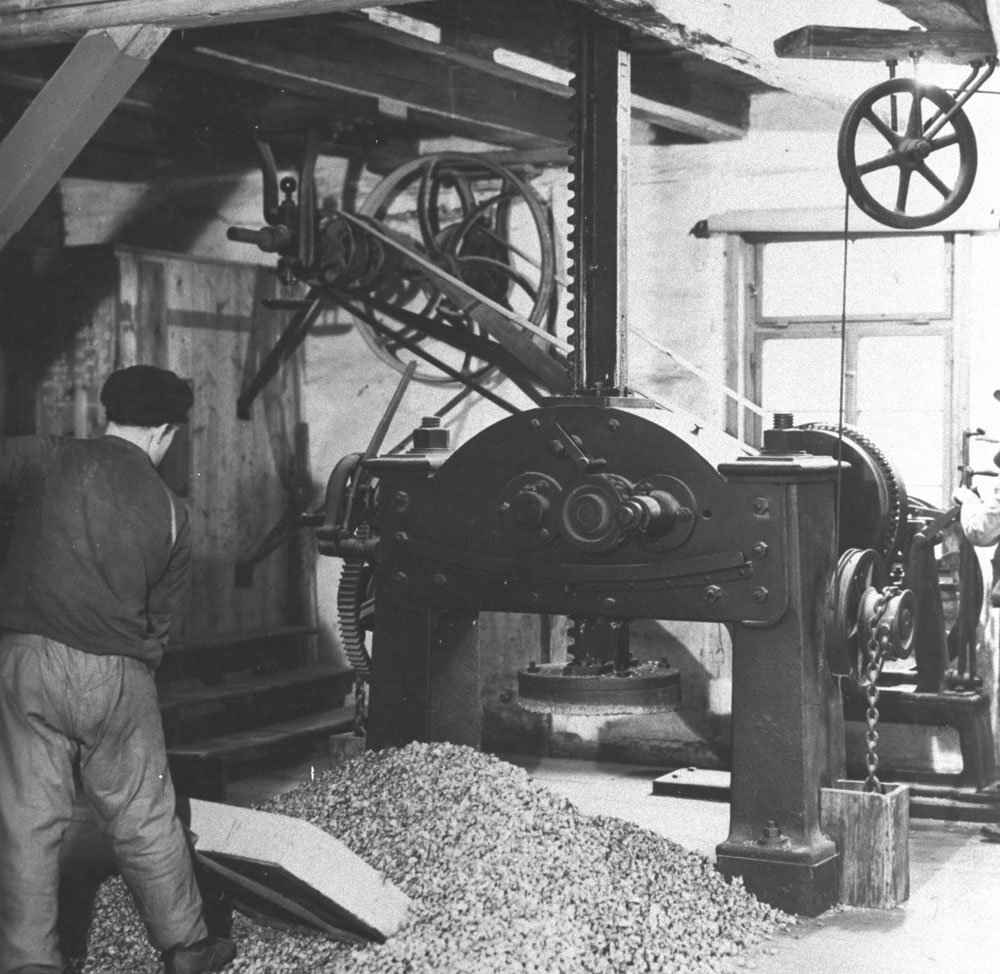
The large Hop ballot press, around 1940.
Good for the German Hop Museum. Good for the Hoch family that the Hop Museum existed. A perfect win-win situation. After a viewing appointment, we quickly came to an agreement: we were welcome to take everything with us, provided we dismantled it ourselves and transported it home on our own. Everyone was happy.
So in the early summer of 1999, a motley crew set off on an adventure trip to faraway Swabia. They included an old warhorse from the Wolnzach building yard, two apprentices from the museum association chairman’s electrical company, a Polish powerhouse from the mayor’s company – and the academically trained museum director. Not exactly a specialized team for dismantling heavy industrial machinery.
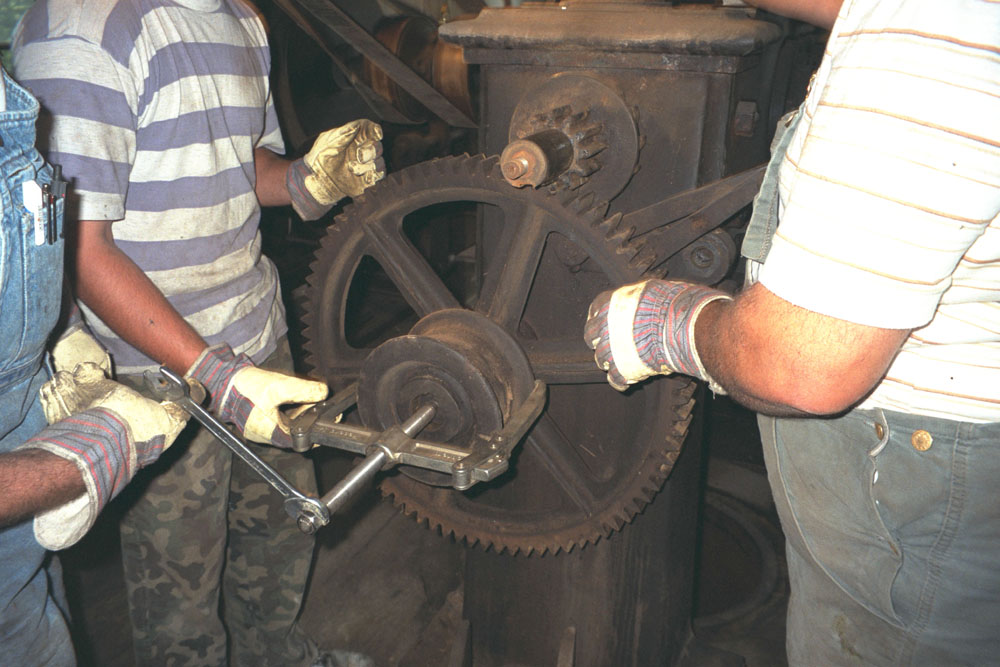
All hands full (the only meaningful text at this point…).
The first inspection after arriving in Tübingen was accordingly. The looks on the faces of the four dismantlers are unforgettable. What? Dismantle them? This piece? Us? Are you out of your mind?
However, when the fuse was screwed back in and the switch was carefully flipped, the fascination increased a little. German workmanship, no doubt about it. Almost 30 years of standstill had not impressed the machine in the slightest. The heavy rack moved up and down as smoothly and silently as if it had been running for the last time the day before yesterday. Only there were no hops left to press in.
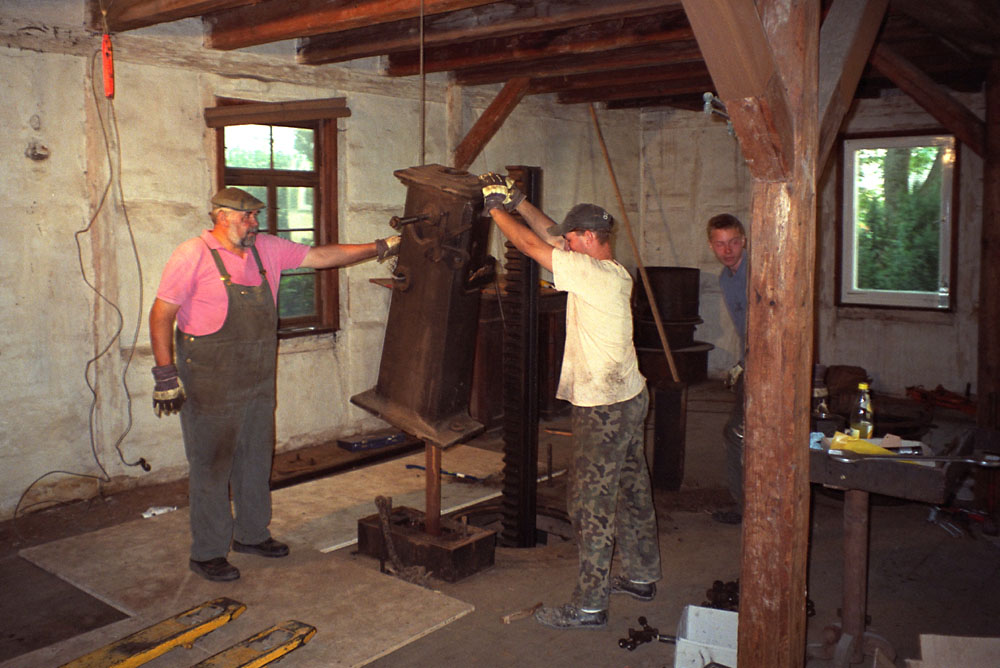
The hop press was already largely dismantled.
Somehow we managed to loosen the first heavy nut on the press housing, unscrew the first threaded rod and lift the first shafts and cranks. Fortunately, we realized relatively early on that a lively pile-up of screws, shafts and bearings would speed up the dismantling process, but would lead to huge problems when it came to reassembly. There were no longer any assembly plans, assembly instructions or anything similar. And if they had ever existed at all, they had not survived at the Hoch family. Today, you would pull out your tablet or mobile phone and photograph every single component in series or, ideally, record everything on video. Back then, in the pre-smartphone age, a Polaroid camera from the photo store in the nearby city center saved us. For the younger ones: a camera that ejected a finished image print immediately after the shutter was released, which could then be immediately decorated with labels, arrows and numbers using a waterproof felt-tip pen. What would have happened on Sunday if the photo store had been closed? Or if the hop magazine of the Hoch family had been located in a small town without a photo studio?
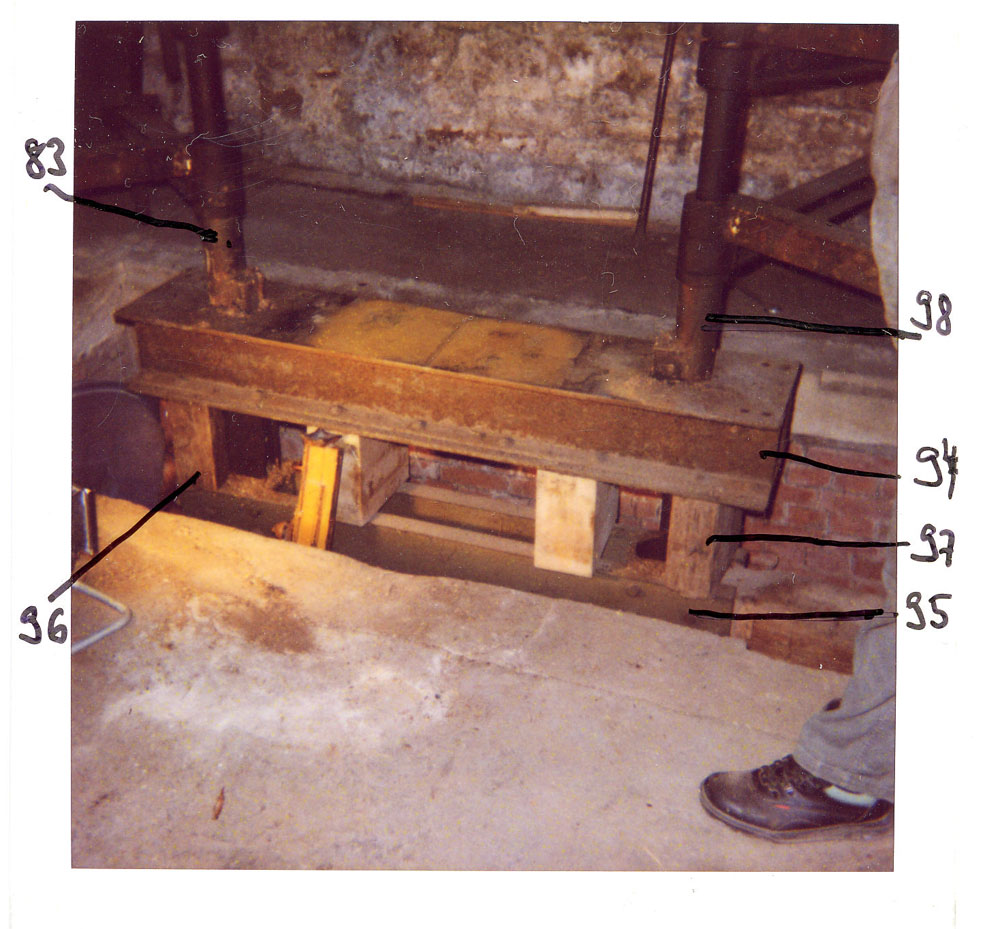
Polaroid pictures so that the puzzle pieces could be put back together properly later.
But luck was with us. After a few days, the press actually lay completely dismantled in front of us, most of it on the upper floor of the former hop magazine. Then things became critical once again. The crane company with whom we had actually agreed to help us lift the machine parts down suddenly couldn’t be persuaded. Everything was far too cramped and then in the middle of the city, how was that going to work? The spatial circumstances had not changed since the preparatory discussions, but what the heck, we needed another solution.
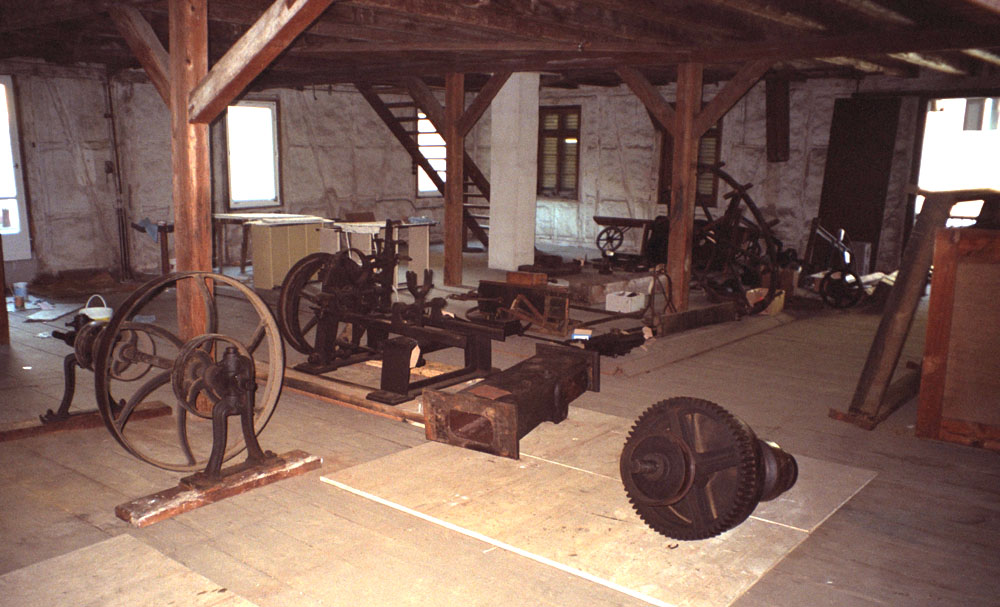
A jumble of individual parts.
This time, the Wolnzach building yard helped us out of a tight spot. After we had described our mishap on the phone to the head of the building yard at the time, who had beaten his hands over his head dozens of times in our mind’s eye and rightly wondered about so much naivety, he personally got on the building yard truck with its loading crane and drove the three hours up to Tübingen. He had the Wolnzach hop haulier Thoma with him for the return journey. And again, luck was on our side. The building yard crane reached up just enough to lift the heavy parts down and stow them on the loading area. After around a week’s work, everything was finally stowed away in the Wolnzach emergency depot.
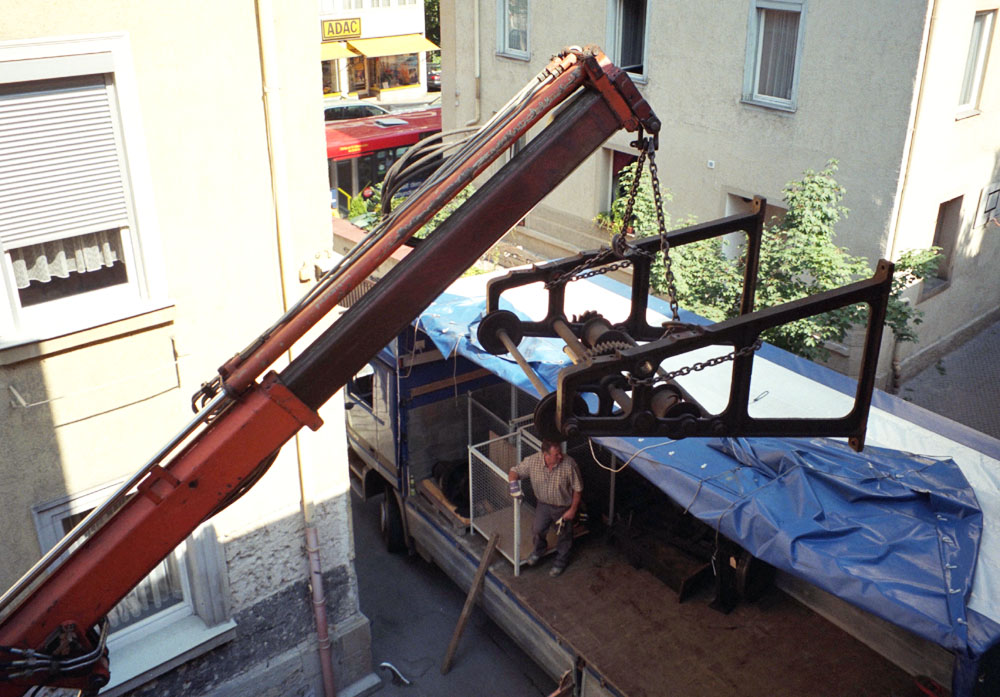
Removing the individual parts with the building yard crane.
Around five years later, everything was rebuilt in the new Hop Museum building, which had been completed in the meantime. It turned out that some of the number labels on the components had been lost during transportation. And that a few room dimensions from Tübingen had been forgotten and could no longer be reconstructed. And that, strangely enough, some nuts and bolts had simply been left over. And a few more things like that.
But even these final hurdles were overcome. The heavy press from Tübingen has now found a new home in the German Hop Museum in Wolnzach. That was a good 25 years ago. As far as is known, it is the only exhibit of its kind still in existence, in its original condition, fully assembled and ready for operation. An impressive testimony to a bygone era of hop trading companies that once shaped city life. In Nuremberg, Bamberg, Fürth – and in Tübingen.
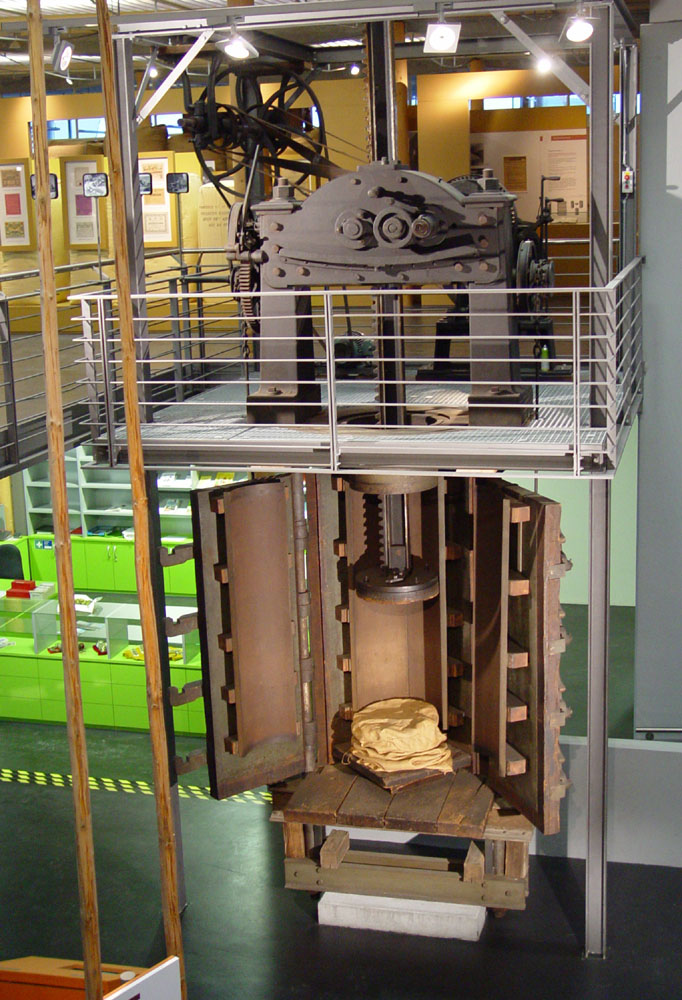
This is how it stands today in the German Hop Museum, the old ballot press from Tübingen. The only surviving example of its kind.
